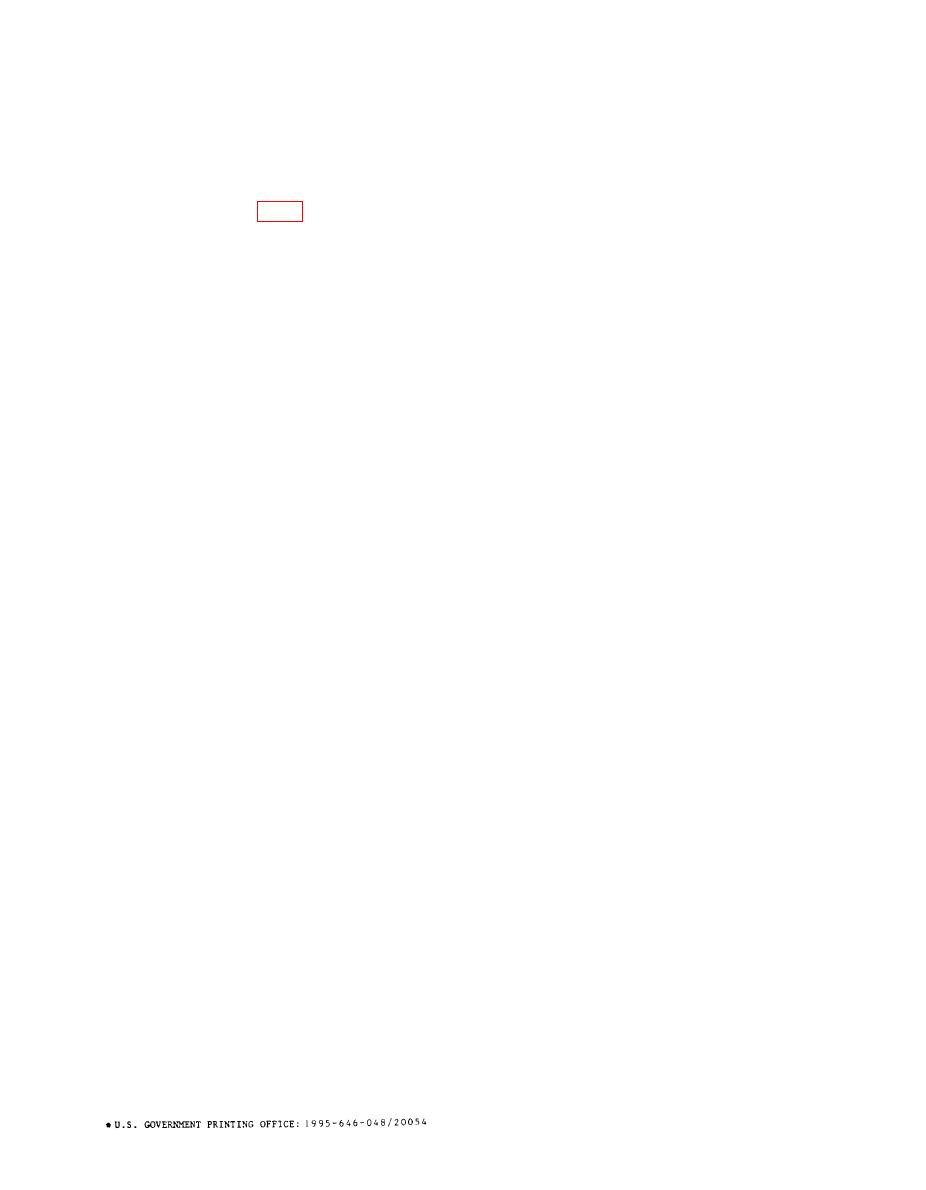
TM 9-4910-623-14&P
INSTRUCTIONS
CAUTION
Prior to putting this new tester into use, familiarize yourself with the following instructions. Since the tester
is capable of developing very high pressures, improper use could result in damage to instrument or injury to
operator.
1. Thread HANDLE (Fig. 4,Item 11) into CAM (Item 10).
2. PUMP VALVE (Item 19)
a. Turning valve clockwise until it seats shuts the tester off thus giving a true leakage reading of the device
being tested.
b. Turn valve two or three turns counter-clockwise off its seat, for normal pump operation.
3. GAGE VALVE (Item 20)
a. To apply pressure to a device without overloading gage, turn the valve clockwise until it seats. This position
is used to protect gage from hydraulic shock.
b. To test any device, using the gage, turn valve counter-clockwise to a neutral position, approximately one
turn off its seat.
c. To release pressure on the test system, continue turning gage valve counter-clockwise until pressure is
released. Screw valve in (clockwise) again in preparation for the next test.
CAUTION
Continuous testing in the upper 1/5 of gage scale, and severe hydraulic shocks without gage
valve closed could result in reduced gage life. Avoid when possible.
4. QUICK-CHANGE GAGE (Item 21)
Before interchanging gages, release existing pressure on gage to avoid damage to instrument. Place
fingers in semi-circular opening under gage housing and push GAGE (Item 21) and GAGE ADAPTER (Item
22) up and out. To install another gage merely reverse procedure, pressing gage in from the top.
5. PUMP OUTPUT CAPACITY - 1300 mm3 (1.3 cc) per stroke at 7500 psi
6. FILTER (Item 4)
The tester is equipped with a very fine (3 to 5 Microns) filter which will remove any dirt that maybe in the
fluid. The use of clean fluid will insure longer service and life of filter.
7. FILLER PLUG (Item 15) must be left loose while tester is in operation to allow air to enter fluid reservoir.
8. Before transporting, close pump and gage valves and filler plug to avoid leakage.
9. Remove FILLER PLUG (Item 15) and fill with fluid desired for testing. Reservoir capacity - Approximately
1/2 gallon
10. Operate pump handle until air is purged from the system as evidenced by fluid emitting from Discharge
Connection (Item 35). This step is also necessary in the event the tester runs completely out of fluid.
CAUTION
When dealing with high pressures and precision parts the introduction of dirt is very harm
ful. Be sure all connecting apparatuses are clean before attachment to device to be tested. The simplest
and best way to do this is to pump fluid through them with the tester.
11. CAM (Item 10) surface and DOWEL (Item 9) should be lubricated with SAE 10 oil every 10 to 20 hours of
tester use.
12. Keeping above instructions in mind will assure trouble-free operation and efficient service in a
widevariety of tests.
Change 1
13

